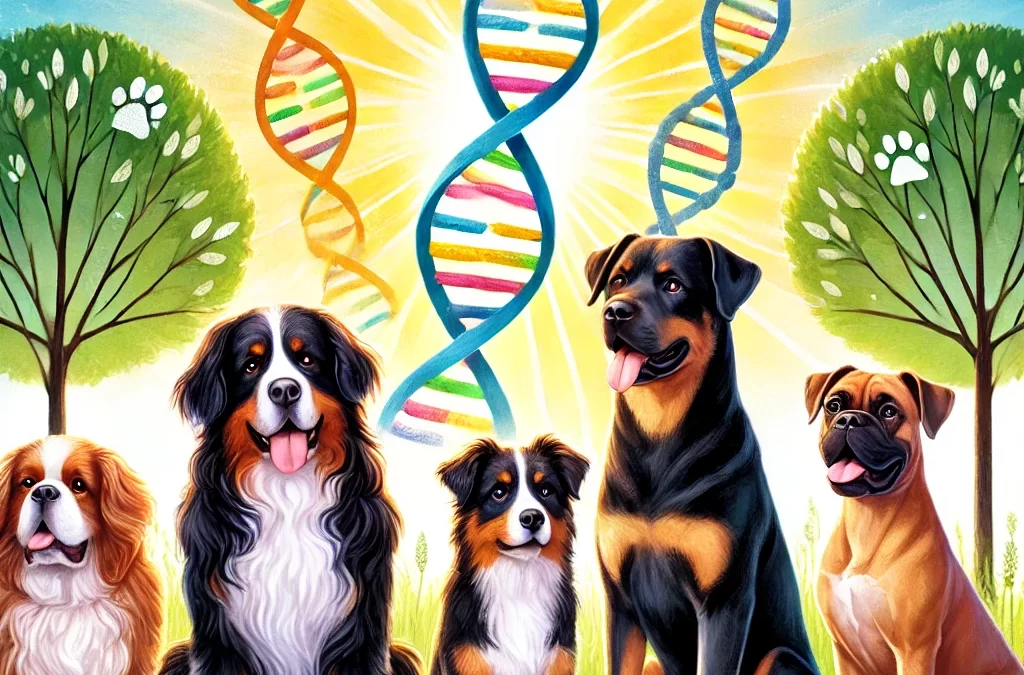
에 의해 TCMVET | 12월 6, 2024 | 개 암 및 종양
When a beloved pet is diagnosed with cancer, it can be a challenging journey for any pet owner. Exploring the right treatment options and supplements becomes crucial in ensuring their comfort and quality of life. Among the myriad of pet cancer supplements available online, TCMVET 바이투샤오 stands out as a natural, effective option designed to help manage and combat tumor growth in dogs and cats.
Understanding the Role of Cancer Supplements in Pet Care
Cancer in pets often leads to physical discomfort, reduced energy levels, and decreased immunity. While conventional treatments like surgery, chemotherapy, or radiation can be effective, they are often accompanied by high costs and potential side effects. This is where natural supplements can play a supportive role, aiming to:
- Enhance the immune system.
- Slow tumor growth.
- Improve overall well-being and energy levels.
- Reduce inflammation and discomfort.
By combining traditional therapies with scientifically-backed supplements, you can give your pet the best chance at a healthier and more comfortable life.
TCMVET 바이투샤오란 무엇인가요?
TCMVET 바이투샤오 is a specialized herbal formula rooted in the principles of Traditional Chinese Medicine (TCM). Developed specifically for pets, it leverages the power of natural ingredients to:
- Reduce Tumor Growth: Its unique blend targets abnormal cell proliferation, helping to slow the growth of tumors.
- Support Overall Health: With its immune-boosting properties, it enhances your pet’s natural defenses.
- Ease Symptoms: Baituxiao can reduce inflammation and improve energy, ensuring your pet remains active and happy.
Why Choose TCMVET Baituxiao?
- 천연성분: Free from synthetic additives, Baituxiao uses herbal components that are gentle on your pet’s body.
- Veterinarian-Approved: Many vets support its use as part of an integrative treatment plan for pets with tumors.
- Scientifically Formulated: Combining modern research with TCM expertise, TCMVET Baituxiao is carefully crafted for safety and efficacy.
TCMVET Baituxiao 사용 방법
Using TCMVET Baituxiao is simple and convenient. It can be administered orally or mixed with food for easy consumption. Dosages are adjusted based on your pet’s size and specific health needs, ensuring optimal results. Always consult your veterinarian before introducing any new supplement to your pet’s routine.
Where to Buy TCMVET Baituxiao Online
You can purchase TCMVET Baituxiao conveniently online through platforms like Amazon, Shopify, or directly from the TCMVET website. With fast shipping options, including fulfillment from Amazon warehouses, you can start your pet’s journey to better health quickly and hassle-free.
애완동물 소유자의 사용후기
Pet owners who have used TCMVET Baituxiao often share heartwarming success stories. Many have reported noticeable improvements in their pets’ energy levels, reduced tumor sizes, and a higher quality of life.
Tips for Choosing the Right Pet Cancer Supplement
When looking for effective cancer supplements online, consider the following:
- Safety and Ingredients: Opt for products with natural, pet-safe components.
- Reviews and Recommendations: Look for feedback from other pet owners.
- Ease of Administration: Choose supplements that are easy to give to your pet.
- Expert Guidance: Consult your vet to ensure the supplement aligns with your pet’s treatment plan.
결론
Navigating a pet cancer diagnosis is never easy, but with the right tools and supplements like TCMVET 바이투샤오, you can provide your pet with comfort, care, and improved well-being. By purchasing effective cancer supplements online, you can take a proactive step in managing your pet’s health journey. Explore TCMVET Baituxiao today and see the difference it can make for your furry friend.

에 의해 TCMVET | 12월 6, 2024 | 개 암 및 종양
Ovarian cancer in dogs is a rare and often silent intruder, subtly weaving its way into the lives of our beloved pets. Unlike more common canine cancers, ovarian cancer doesn’t always present overt symptoms in its early stages, making it a challenge for even the most vigilant pet owners to detect. This article dives deep into this under-discussed topic, shedding light on the symptoms and early warning signs that every dog owner should know.
Understanding Ovarian Cancer in Dogs
Ovarian cancer arises from abnormal growth in the ovaries, often in middle-aged or older unspayed females. The condition is rare due to the increasing practice of spaying, which significantly reduces the risk. However, for intact dogs, the danger remains—a silent predator lurking within.
Early Symptoms: The Whisper of Disease
Ovarian cancer symptoms often overlap with other health issues, making early detection tricky. Here are the subtle signs that might hint at a deeper problem:
- Abnormal Heat Cycles
If your dog’s estrus cycles become irregular, prolonged, or unexpectedly cease, it could indicate ovarian abnormalities.
- Enlarged Abdomen
Fluid accumulation (ascites) or a growing tumor may cause noticeable swelling in your dog’s abdomen.
- 행동 변화
Lethargy, irritability, or restlessness may signal discomfort or pain caused by internal changes.
- Loss of Appetite and Weight
A lack of interest in food, paired with unexplained weight loss, often serves as an early red flag.
- Discharge or Bleeding
Vaginal discharge, particularly if it is unusual or occurs outside of the typical heat cycle, warrants immediate veterinary attention.
Advanced Symptoms: When Silence Breaks
As ovarian cancer progresses, more noticeable and severe symptoms may arise:
- Difficulty Breathing: This can occur if the cancer metastasizes to the lungs.
- Lameness: A sign of metastasis to the bones.
- Visible Masses: Palpable growths in the abdomen or surrounding areas.
- Severe Lethargy and Weakness: Indicative of systemic spread and declining health.
Diagnosis: The Importance of Early Detection
Ovarian cancer is most effectively diagnosed through a combination of diagnostic imaging (ultrasound or X-rays) and blood tests. A biopsy or fine-needle aspiration of suspicious masses can confirm the presence of cancer. Regular veterinary check-ups, especially for unspayed dogs, are critical for early detection.
Prevention and Spaying: A Lifesaving Step
The single most effective way to prevent ovarian cancer in dogs is spaying. This not only eliminates the risk of ovarian cancer but also reduces the chances of other reproductive cancers and diseases, such as pyometra.
Holistic Care for Canine Cancer
For dogs diagnosed with ovarian cancer, holistic care can complement conventional treatments like surgery, chemotherapy, or radiation. Incorporating anti-inflammatory diets, immune-boosting supplements, and stress-reducing therapies can enhance your pet’s quality of life.
- 허브 지원: Consider supplements like turmeric or milk thistle, known for their anti-inflammatory and detoxifying properties.
- 식단 조정: A high-protein, low-carbohydrate diet may help slow cancer growth.
- Emotional Care: Never underestimate the power of love, attention, and comfort during this challenging time.
The Unwavering Bond
While the diagnosis of ovarian cancer in dogs can be heartbreaking, it also serves as a poignant reminder of the deep bond we share with our furry companions. Every symptom, every sign, and every action we take is a testament to the unconditional love that defines our relationship with them.
By understanding the subtle signs of ovarian cancer and taking proactive measures, we can better protect our canine companions, ensuring they live their happiest, healthiest lives. After all, they deserve nothing less than our very best.

에 의해 TCMVET | 12월 5, 2024 | 개 암 및 종양
Abnormal growths in a dog’s lower intestines can cause significant health concerns, ranging from discomfort to life-threatening conditions. These growths, often located in the rectum or colon, can be benign or malignant. Understanding their causes, symptoms, and treatment options is crucial for timely intervention.
Common Types of Growths
- 폴립
- Polyps are benign growths that develop in the lining of the intestines.
- They may cause minor bleeding, diarrhea, or constipation.
- If untreated, polyps can sometimes transform into malignant tumors.
- 선암종
- A malignant tumor affecting the glandular cells lining the intestine.
- This is one of the most aggressive types of lower intestinal cancers.
- Early detection is critical for effective treatment.
- 평활근육종
- A rare type of cancer that originates in the smooth muscle of the intestines.
- It can cause obstruction and severe digestive issues.
- Hemangiomas and Hemangiosarcomas
- These vascular tumors can either be benign (hemangiomas) or malignant (hemangiosarcomas).
- They often lead to bleeding and anemia.
Symptoms of Abnormal Growths
Dogs with abnormal growths in the lower intestines may exhibit the following symptoms:
- Blood in Stool: Bright red or tar-like black stool.
- Straining to Defecate: Difficulty or pain during bowel movements.
- Changes in Stool Shape: Narrow or ribbon-like stool due to obstruction.
- Diarrhea or Constipation: Persistent changes in bowel habits.
- Weight Loss: Unexplained loss of weight and appetite.
- Vomiting or Lethargy: Indications of gastrointestinal distress.
원인 및 위험 요인
While the exact cause of abnormal growths varies, some contributing factors include:
- Diet: Poor-quality or processed diets may contribute to inflammation and tumor development.
- Age and Genetics: Older dogs and certain breeds like Boxers and German Shepherds are more prone to intestinal tumors.
- Chronic Inflammation: Conditions like colitis may predispose dogs to growths.
- Exposure to Toxins: Environmental toxins and carcinogens can increase cancer risk.
진단
Veterinarians use a combination of methods to diagnose intestinal growths:
- 신체 검사: Palpation to identify masses.
- 이미징: X-rays, ultrasounds, or CT scans to visualize growths.
- Endoscopy: Insertion of a camera to examine the intestines and collect tissue samples.
- 생검: Lab analysis of tissue to determine if the growth is benign or malignant.
치료 옵션
The treatment approach depends on the type and severity of the growth:
- 외과적 제거: Polyps and localized tumors can often be removed surgically.
- 화학요법 또는 방사선 요법: Used for malignant growths, particularly adenocarcinoma.
- Dietary Management: High-fiber or prescription diets to manage symptoms.
- 완화 치료: Pain relief and quality-of-life management for advanced cases.
예방 및 모니터링
- 정기 검진: Routine veterinary visits can help detect growths early.
- Healthy Diet: A diet rich in natural, high-quality ingredients can reduce inflammation.
- Screening in At-Risk Breeds: Periodic screenings for breeds prone to intestinal issues.
수의사를 만나야 할 때
If your dog shows signs of rectal bleeding, chronic digestive problems, or significant changes in stool, it’s essential to consult a veterinarian promptly. Early diagnosis and treatment can dramatically improve outcomes.
By staying informed and proactive, pet owners can better safeguard their dogs’ health and address potential problems before they escalate.

에 의해 TCMVET | 12월 5, 2024 | 개 암 및 종양
Cancer remains one of the leading causes of death in dogs worldwide. While genetic predisposition often takes the spotlight in discussions, a deeper exploration reveals that environmental factors could play a far greater role than previously believed. Let’s dive into this topic and uncover some startling truths about the real number one cause of cancer in dogs.
Beyond Genetics: Environmental Triggers Take Center Stage
It’s easy to blame cancer on genetics. After all, certain breeds like Golden Retrievers and Boxers are more prone to developing cancers such as lymphoma or mast cell tumors. However, experts increasingly point to environmental carcinogens as the primary driver of canine cancer. These include:
- Chemical Exposure: Pesticides, herbicides, and household cleaning agents expose dogs to harmful chemicals daily. Many of these substances contain carcinogens that can accumulate in the body over time.
- Processed Diets: Kibble and canned food often contain preservatives, artificial coloring, and low-quality ingredients that may contribute to long-term inflammation and cellular damage.
- Air Pollution: Dogs, with their acute sense of smell, inhale more environmental toxins than humans. Polluted air, cigarette smoke, and vehicle emissions are just some of the culprits.
- Over-vaccination: While vaccines are essential, over-vaccination has been linked to certain cancers, such as injection-site sarcomas. Tailoring vaccination schedules to your dog’s specific needs is crucial.
Inflammation: The Silent Catalyst
Chronic inflammation is another critical factor. From untreated allergies to obesity, inflammation creates the perfect storm for cancerous cells to thrive. This underscores the importance of a holistic approach to canine health, addressing both physical and environmental stressors.
Prevention is the Best Medicine
If environmental triggers are the number one cause of cancer in dogs, preventive strategies are our best defense. Here’s how pet owners can take action:
- Switch to Natural Diets: Opt for fresh, whole foods free of preservatives. Incorporate cancer-fighting ingredients like turmeric, blueberries, and broccoli into your dog’s diet.
- Filter Their Water: Provide filtered water to reduce exposure to heavy metals and toxins.
- Limit Chemical Use: Replace toxic cleaning products with pet-safe alternatives, and reduce pesticide use in your home and yard.
- Routine Detox: Consider natural detoxifiers like milk thistle or chlorella to help eliminate toxins from your dog’s body.
- 정기 검진: Early detection is key. Conduct monthly checks for lumps and abnormal growths, and visit your vet annually for thorough screenings.
The Role of Holistic Medicine
Natural therapies are increasingly popular among dog owners seeking to combat cancer. From acupuncture to herbal supplements like TCMVET 바이투샤오, these treatments aim to reduce inflammation, boost immunity, and promote overall well-being. Such approaches, combined with lifestyle changes, offer a promising way to prevent and manage cancer in dogs.
A Call to Action: Protecting Our Best Friends
As caretakers, we have the power to minimize our dogs’ exposure to cancer-causing factors. By focusing on prevention, nutrition, and natural therapies, we can significantly reduce the risk of cancer and extend our furry companions’ lives. Let’s take the initiative to question old beliefs, adopt new practices, and safeguard the well-being of our beloved pets.

에 의해 TCMVET | 2024년 12월 4일 | 개 암 및 종양
Heart base tumors, though less commonly discussed than other canine cancers, pose significant health challenges for affected dogs. These tumors originate near the base of the heart and often remain undetected until they grow large enough to interfere with heart function. Understanding this silent yet serious condition can help dog owners take proactive steps toward diagnosis and treatment.
What Are Heart Base Tumors?
Heart base tumors are growths that form in or around the base of the heart, typically near vital structures such as the aorta or pulmonary artery. The two most common types are:
- Chemodectomas (Paragangliomas): Slow-growing tumors arising from chemoreceptor cells that regulate blood oxygen levels.
- Ectopic Thyroid Tumors: Rare tumors originating from thyroid tissue located near the heart.
Both types can compress the heart or adjacent structures, leading to significant cardiovascular complications.
Breeds Predisposed to Heart Base Tumors
While any dog can develop these tumors, certain breeds are more susceptible due to genetic predisposition. These include:
These breeds often display symptoms later in life, with the condition frequently diagnosed in middle-aged to senior dogs.
Signs and Symptoms: The Subtle Warnings
Heart base tumors are often asymptomatic in their early stages, making early detection challenging. However, as they grow, the following symptoms may appear:
- Exercise Intolerance: Difficulty performing activities the dog once enjoyed.
- Coughing: Caused by fluid accumulation or pressure on the trachea.
- Fainting (Syncope): Resulting from disrupted blood flow.
- Swollen Abdomen: Due to fluid buildup (ascites) from heart failure.
- 호흡 곤란: Indicating compression of the lungs or airways.
These symptoms often mimic other cardiac or respiratory conditions, complicating diagnosis.
Innovative Diagnostic Approaches
Traditional diagnostic methods, such as X-rays and echocardiograms, remain valuable, but new technologies are advancing the field:
- CT and MRI Scans: Provide detailed imaging of the tumor and surrounding structures.
- Biopsy with Fine Needle Aspiration: Helps determine the tumor type and inform treatment plans.
- 유전자 테스트: Emerging tools may identify predispositions in certain breeds.
Treatment Options: A Tailored Approach
Treatment for heart base tumors depends on factors such as tumor type, size, and the dog’s overall health. Options include:
- 외과적 제거: Effective for small, localized tumors but carries risks due to the proximity to vital structures.
- 방사선 치료: Often used for inoperable tumors to slow growth and alleviate symptoms.
- 완화 치료: Includes medications like diuretics to manage symptoms such as fluid retention.
Natural Therapies: Complementary Solutions
For owners seeking alternative approaches, natural therapies may complement conventional treatments:
- Herbal Supplements: Formulas like astragalus and turmeric may support immune health and reduce inflammation.
- 침술: Can improve circulation and alleviate pain in affected dogs.
- 영양 지원: Diets rich in antioxidants and omega-3 fatty acids may bolster overall health.
While natural therapies can be beneficial, they should always be discussed with a veterinarian to ensure they do not interfere with standard treatments.
예후: 무엇을 기대해야 할까
The prognosis for dogs with heart base tumors varies widely. Chemodectomas are generally slow-growing, and dogs may live months or even years with proper management. However, aggressive or inoperable tumors may lead to a shorter lifespan. Regular monitoring and timely intervention are key to improving outcomes.
A Call to Action: Raising Awareness
Heart base tumors remain an under-recognized threat in veterinary medicine. Increased awareness can lead to earlier diagnosis and better outcomes for affected dogs. Owners of at-risk breeds should prioritize regular check-ups and advocate for advanced diagnostics if cardiac issues are suspected.
결론
Heart base tumors are a complex and challenging condition, but knowledge is power. By understanding the risks, symptoms, and available treatments, dog owners can provide the best possible care for their furry companions. Together, we can shed light on this silent threat and offer hope to dogs and their families.

에 의해 TCMVET | 2024년 12월 4일 | 개 암 및 종양
가족에게 털복숭이 친구를 추가하는 것을 고려할 때 건강은 의사 결정 과정에서 중요한 요소가 되어야 합니다. 모든 개는 특정 건강 상태에 취약하지만 일부 품종은 유전적으로 암을 발병할 가능성이 있습니다. 이러한 위험을 이해하면 정보에 입각한 선택을 하고 반려동물의 건강을 적극적으로 관리할 수 있습니다.
일부 품종이 암에 더 걸리기 쉬운 이유는 무엇일까?
개에서 암은 인간과 마찬가지로 유전, 환경 요인 및 나이에 영향을 받습니다. 특정 특성을 위해 선택적으로 번식된 품종은 종종 암에 대한 소인을 포함한 유전적 취약성을 물려받습니다. 많은 품종의 경우, 이 불행한 유산은 바람직한 특성을 유지하기 위한 수세기 동안의 근친 교배의 결과입니다.
암 위험이 높은 품종
1. 골든 리트리버
골든 리트리버는 친근한 성격과 지능으로 사랑받지만 특히 암 발병 위험이 높습니다. 림프종 그리고 혈관육종. 연구에 따르면 골든 리트리버의 약 60%가 평생 동안 암에 걸릴 것으로 나타났습니다. 이 놀라운 통계는 골든 리트리버 평생 연구와 같은 연구 이니셔티브를 주도하여 그들의 취약성 이면에 있는 이유를 밝히는 것을 목표로 했습니다.
2. 베르네스 마운틴 독
온화한 기질과 눈길을 끄는 삼색 털로 유명한 베르네스 산악견은 평균보다 높은 위험에 직면합니다. 조직구육종, 희귀하지만 공격적인 형태의 암입니다. 비교적 짧은 수명(6~8년)이 이 질병과 종종 연관됩니다.
3. 복서
장난기 어린 에너지와 충성심을 지닌 권투 선수는 다양한 암에 걸리기 쉽습니다. 비만 세포 종양 그리고 림프종. 그들의 소인은 특정 유전자 돌연변이와 관련이 있을 수 있으므로 정기적인 수의사 검진이 필수적입니다.
4. 로트와일러
로트바일러는 강하고 튼튼한 개라는 평판에도 불구하고 다음과 같은 질병에 취약합니다. 골육종, 뼈암의 한 유형입니다. 이 위험은 특히 큰 로트바일러에서 높으며, 체중과 관절 건강을 모니터링하는 것이 중요하다는 것을 강조합니다.
5. 스코티시 테리어
스코티시 테리어는 애정을 담아 스코티시라고 불리며 비례적으로 영향을 받습니다. 전이세포암(TCC), 방광암의 한 종류입니다. 이 품종 특유의 위험은 작지만 튼튼한 이 개들의 요로 건강을 관찰하는 것의 중요성을 강조합니다.
고정관념 깨기: 소형견도 예외는 아니다
암은 종종 대형 품종과 관련이 있지만 소형 품종은 면역이 없습니다. 예를 들어, 보스턴 테리어 그리고 닥스훈트 비만세포종과 흑색종에 걸리기 쉽습니다. 개의 크기가 항상 암 위험과 상관관계가 있는 것은 아니므로 모든 애완동물 주인에게 경계가 중요합니다.
개에서 암 위험을 줄이는 방법
개의 유전적 구성을 바꿀 수는 없지만 위험을 최소화하기 위해 사전 조치를 취할 수 있습니다.
- 영양물 섭취: 항산화제가 풍부한 음식으로 균형 잡힌 식단을 개에게 먹이세요. 오메가-3 지방산과 같은 보충제도 세포 건강을 지원할 수 있습니다.
- 규칙적인 운동: 개가 활동적으로 지내도록 하면 건강한 체중을 유지하고 면역 체계의 부담을 줄일 수 있습니다.
- 독소를 피하세요: 살충제, 담배연기 및 기타 발암 물질에 대한 노출을 최소화합니다.
- 정기 검진: 이상을 조기에 발견하기 위해 매년 수의사 진찰을 받으십시오.
- 불임 수술: 특정 품종의 경우, 생식암 위험을 낮출 수 있습니다.
혁신적 연구: 희망의 광선
수의학의 최근 발전은 암에 걸리기 쉬운 품종에 희망을 제공하고 있습니다. 면역 요법, 표적 요법 및 유전자 검사가 더 쉽게 접근 가능해져 조기 발견 및 맞춤형 치료가 가능해졌습니다. 예를 들어, Canine Cancer Genome Project는 인기 품종의 유전적 소인을 매핑하여 품종별 예방 조치의 길을 열었습니다.
품종 선택: 진심 어린 결정
집에 어떤 품종을 데려올지 결정하는 데는 실용적인 고려 사항과 감정적 연결의 균형을 맞추는 것이 포함됩니다. 암 위험이 높은 품종에 끌린다면 잠재적인 의료비와 만성 질환을 관리하는 데 따른 감정적 헌신에 대비해야 합니다. 많은 개 애호가들은 이 품종들이 가져다주는 기쁨이 종종 건강 위험의 어려움보다 더 크다는 데 동의할 것입니다.
결론
어떤 품종은 암에 더 취약하지만, 인식과 선제적 관리가 그들의 삶의 질을 크게 향상시킬 수 있습니다. 그들의 고유한 취약성을 이해함으로써, 당신은 그들이 받을 만한 사랑과 보살핌을 제공할 수 있으며, 가슴 아픈 도전이 될 수 있는 것을 연민과 회복력의 여정으로 바꿀 수 있습니다.







